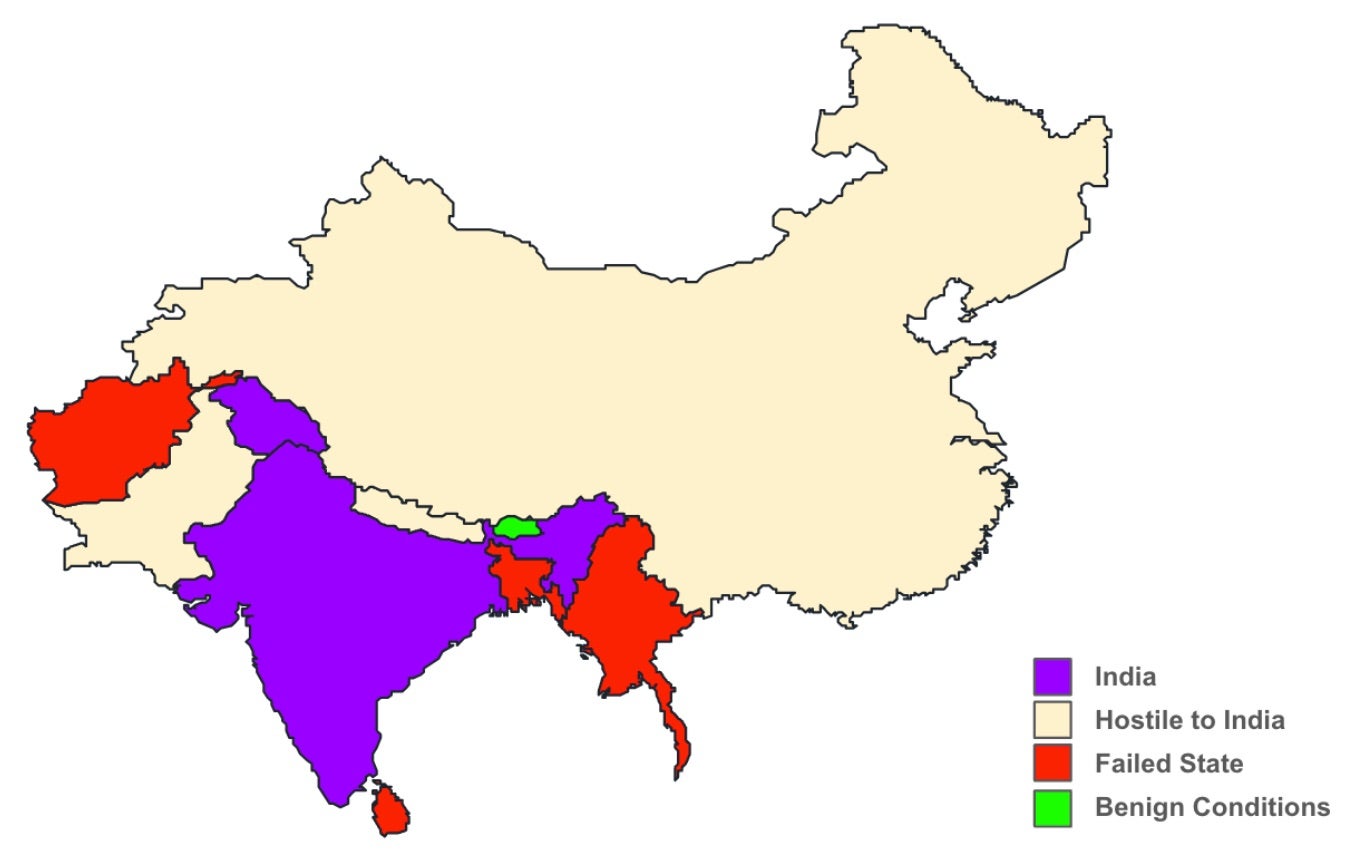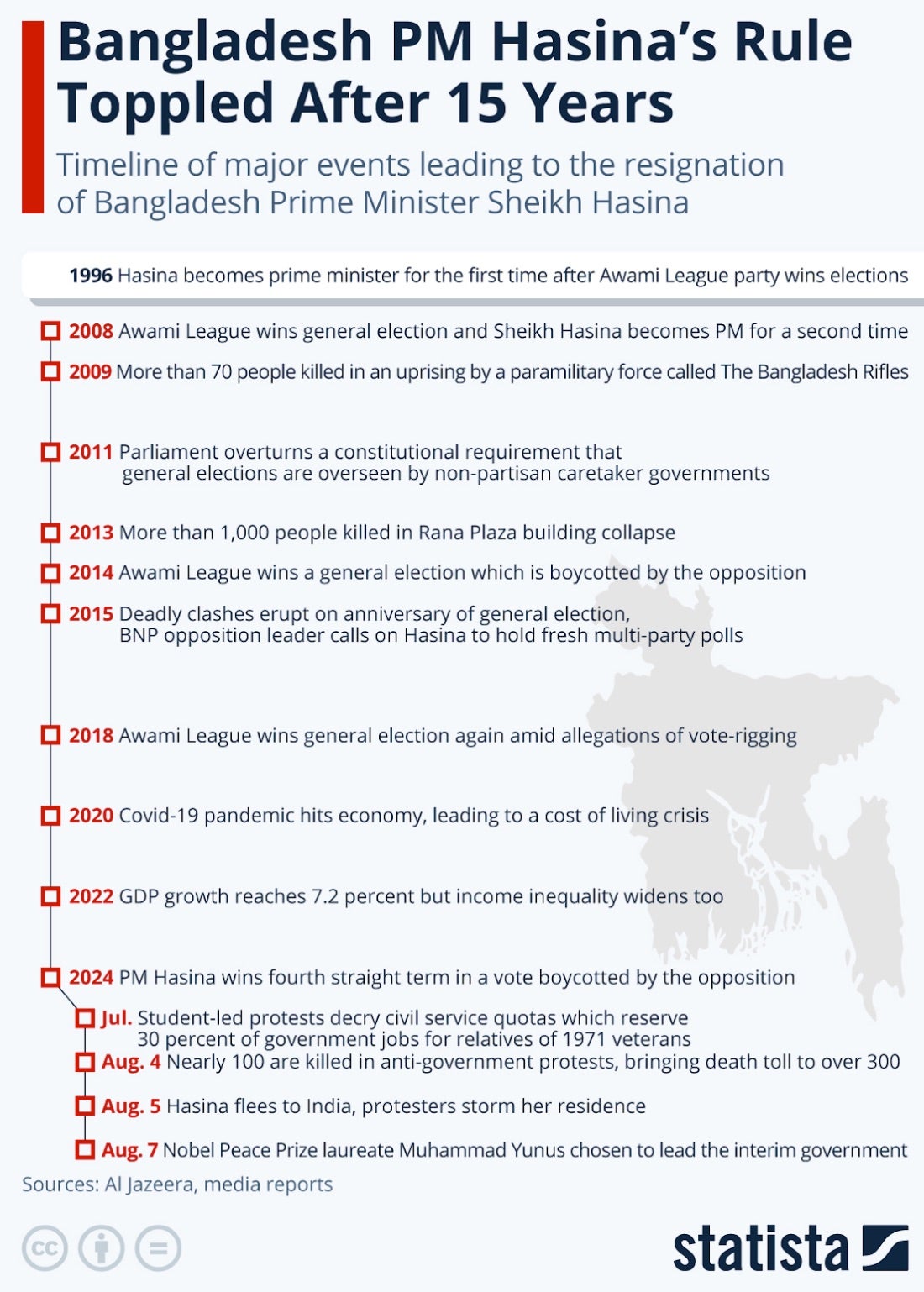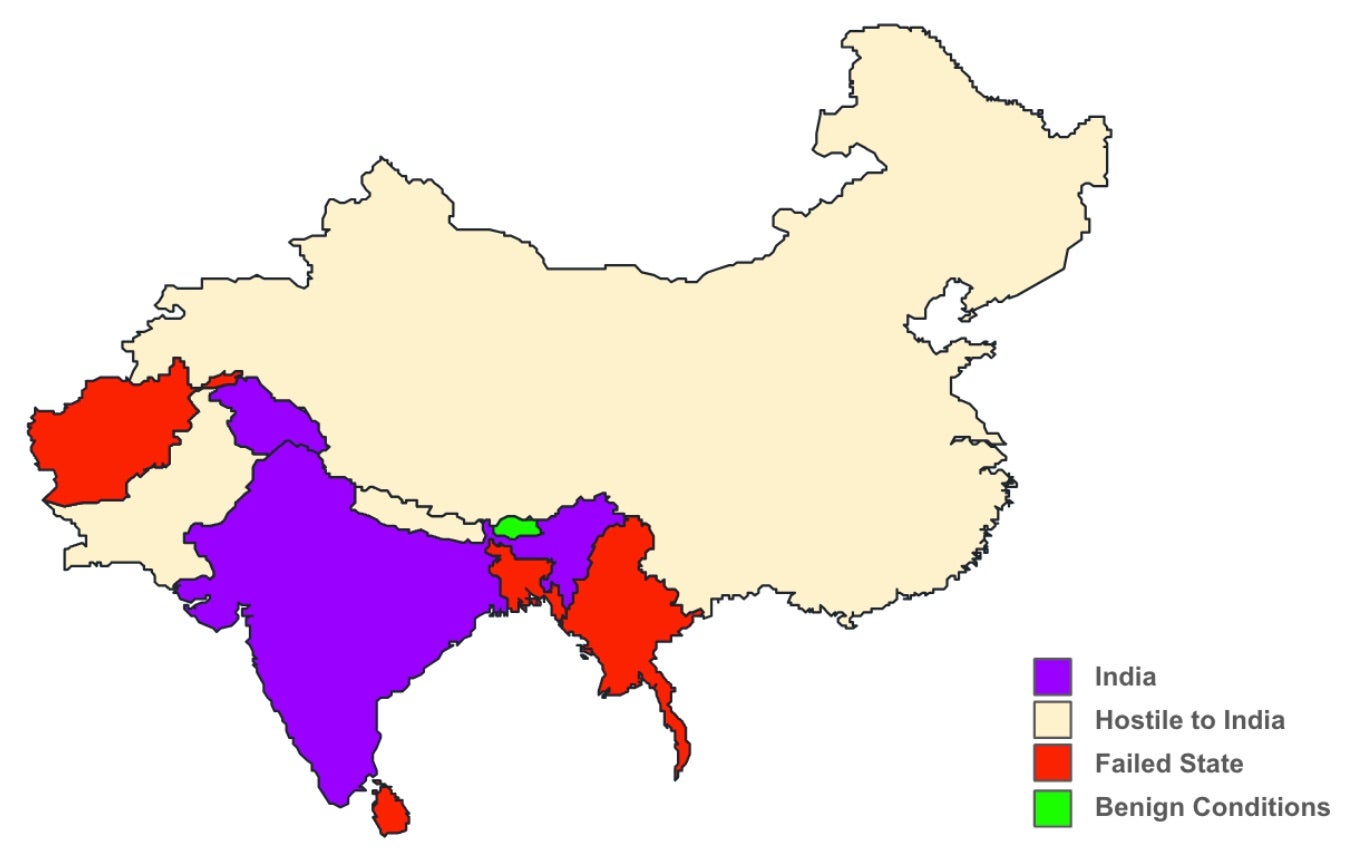
2024-8-19 21:0:20 Author: www.sentinelone.com(查看原文) 阅读量:10 收藏
Last week, we noted the recent spate of terrorist attacks and increasing alarm from governments around the world.
This week, we draw attention to political volatility and strategic competition in South Asia and highlight implications for multinationals in the region.
Please subscribe to read future issues — and forward this newsletter to interested colleagues.
Contact us directly with any comments or questions: [email protected]

On August 5th, Bangladesh’s Prime Minister Sheikh Hasina fled the country she led for 20 years. What started as a small student protest against a job quota system escalated when the government resorted to violent crackdowns that left at least 300 dead. Muhammad Yunus, a Nobel Peace Prize laureate, was sworn in along with an interim cabinet to head Bangladesh’s interim government.
The successful inauguration of Yunus could spell the end of a difficult autocratic era for Bangladesh. Under Hasina’s rule, Bangladesh experienced almost 2,500 extrajudicial killings and extensive corruption allegations. When protests first broke out in 2022, police were quick to use force, a trend that led to mass casualties witnessed in this summer’s events.
Bangladesh’s most consequential political shift of the past two decades is remarkable for both its short-term success – revolutions rarely identify replacement governments so quickly – and long-term uncertainty. While many Bangladeshis feel a cautious optimism for their “second independence”, the change in Bangladesh’s leadership spells uncertainty for regional stability and could upend South Asian power balances with consequences for businesses operating in the region. The events particularly shine a light on the foreign policy of an increasingly important global power and Bangladesh’s largest neighbor – India.

India and Bangladesh’s History | Party Over Country
PM Hasina’s ousting comes after over a decade of Indian investment in the Bangladeshi government. India’s Prime Minister Narendra Modi has focused on increasing India’s regional influence through its “Neighbourhood First” policy and described Bangladesh as the “key pillar” of this effort to advance trade and relations with neighboring states. Bangladesh is now India’s largest trading partner in South Asia, particularly for textiles and agriculture.
Yet, PM Modi’s investment in Bangladesh was partisan. PM Hasina’s political party, Awami League (AL), is seen as a secular alternative against Islamism in the region, and PM Modi welcomed PM Hasina’s toughness on Islamist groups and Pakistan’s intelligence activity in the region. In return, PM Modi gave PM Hasina special attention including inviting her as the first foreign dignitary of his third term as prime minister.
With the ousting of AL as a whole, India will need to overcome perceptions that it is too associated with Hasina and win over the new Bangladeshi government to maintain its regional influence. India is likely concerned with the inclusion of the potentially Pakistan-linked Jamaat-e-Islam party in the new government. However, India will need to overlook these differences given the looming rise of China’s influence in the region.
China’s Growing Influence in South Asia
Strategic competition between China and India plays out across South Asia. While India is the largest South Asian country, China’s influence is growing. The PRC is focused on expanding its economic influence, building a strategic presence, and checking India’s rise. China has particularly invested in Sri Lanka, the Maldives, and Pakistan as a central part of its Belt and Road Initiative.
A new government in Bangladesh raises the possibility of further alignment with China. China likely recognizes that PM Hasina was favorable towards India, and her ousting offers the opportunity to increase relations with the new government. This could come in the form of short-term financial assistance, which Bangladesh could use to replenish the country’s foreign-currency reserves, or general investments and boosting bilateral trade. Both India and China will try to navigate the political uncertainty in their competition to gain influence in the region.
Business Implications
For businesses, this political moment serves as a reminder that organized movements create global flashpoints for both domestic and regional stability. Due to curfews, textile factories that served global brands including H&M and Zara have temporarily stopped production. This disruption not only affected immediate production schedules, but likely had broader implications for inventory management, delivery timelines, and financial performance as well. In the long-term, instability could lead to overall decrease in production capacity. Businesses should develop robust contingency plans and diversify their supply chains to mitigate such risks.

Operations in India continue without disruption, for now, but the country’s neighborhood is destabilizing quickly. To India’s east, Myanmar’s pogroms have pushed refugees into Bangladesh since 2017, before Myanmar itself succumbed to a coup in 2021 and now warlordism. Sri Lanka to India’s south is facing economic catastrophe, creating more potential refugees. To India’s north, China and Nepal are hostile towards India and maintain active border disputes. To India’s west, Pakistan continues to imperil Indian security; further to the west and with a border still touching India, the Taliban-run Afghanistan. All of these states pose potential issues and crises for India in the near-term.
South Asia is increasingly becoming an attractive region for global trade and outsourcing as companies seek to de-risk from their heavy reliance on China. While countries like India, Bangladesh, and Vietnam offer lower labor costs, trade agreements, and growing industrial capabilities, companies need to recognize that shifting operations to new countries introduces a new set of risks. Political instability, regulatory changes, and infrastructural challenges are inherent in these emerging markets. Companies must conduct thorough risk assessments and develop strategies to navigate these complexities. By doing so, businesses can better position themselves to capitalize on the opportunities in South Asia while mitigating potential disruptions.
如有侵权请联系:admin#unsafe.sh